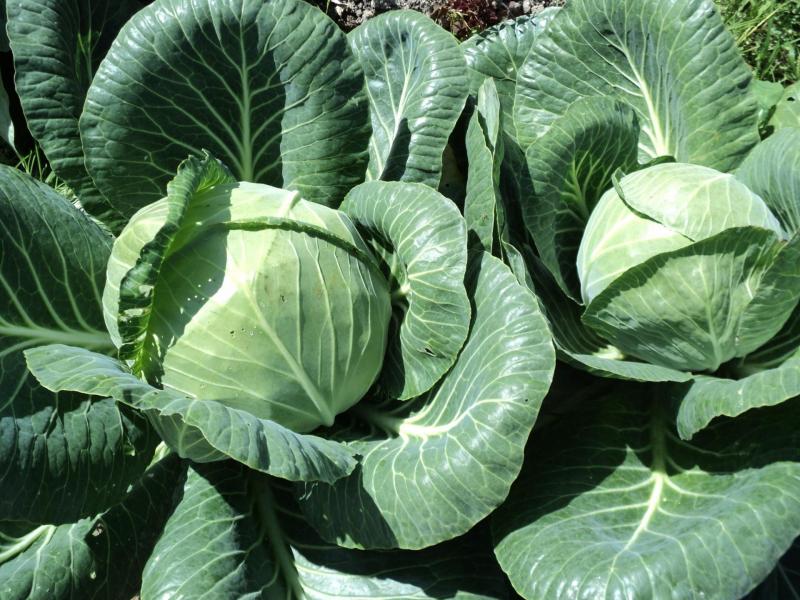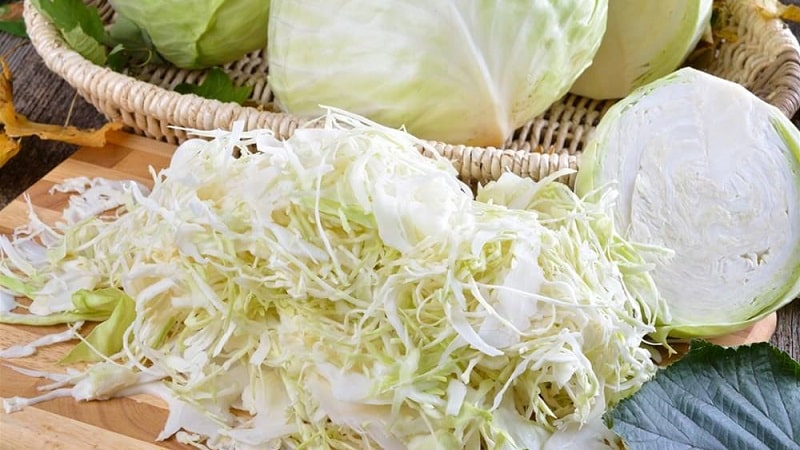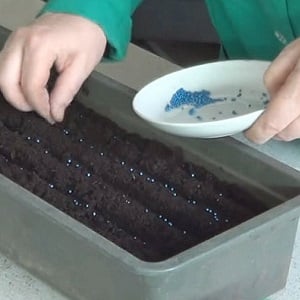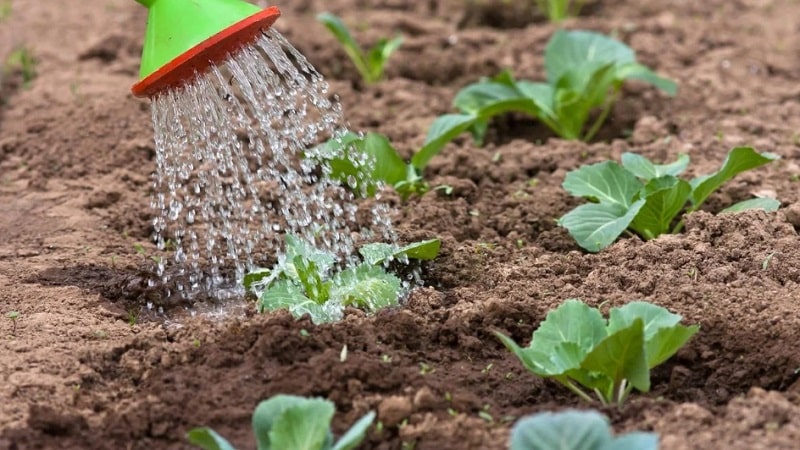Features of planting and growing cabbage hybrid Rinda f1
Getting a wonderful harvest is the dream of every gardener. Successful cultivation of any crop begins with the right choice of variety. The white cabbage hybrid Rinda F1 is deservedly loved by farmers and summer residents. Let's look at the secret of its popularity and look in detail at its characteristics and cultivation features.
Description of cabbage variety Rinda F1
White cabbage Rinda is a productive, high-yielding hybrid of medium ripening period. Recommended for cultivation in open ground using both seedling and non-seedling methods. It is popular due to its reliability even in difficult climatic conditions, attractive appearance, good head structure, and consistently high taste.
The development period from planting seeds to maturity is 110-120 days, from planting seedlings - 75-85 days.
The variety is characterized by round, dense heads of light green color, yellow-white when cut, weighing from 3 to 8 kg.
The taste is sweet, the nutritional value is high.

Origin and development
The variety of mid-season cabbage, on the basis of which the Rind F1 hybrid was obtained, was bred by breeders of the Seminis Vegetable Seeds company, which later became part of the Dutch concern Monsanto Company.
Breeding history
The originator of the Rind F1 hybrid, created on varietal material from the Seminis company, is Russian breeder V.I. Bolgov.The hybrid passed variety testing and was included in the State Register of Breeding Achievements of Russia in 1993. Initially it was zoned in the Central and Volga-Vyatka regions of the Russian Federation. Has a varietal quality certificate.
Chemical composition and beneficial properties
White cabbage Rinda F1 has a high carbohydrate content (up to 3.66%).
100 g of product contains vitamins:
- beta-carotene (provitamin A) – 16-66 mcg;
- B1 – 0.028-0.079 mg;
- B2 – 0.025-0.059 mg;
- B5 – 0.21 mg;
- B6 – 0.101-0.212 mg;
- B9 – 42-125 mcg;
- K – 75-76 mcg;
Minerals:
- potassium – 175-320 mg;
- calcium – 42.5-57 mg;
- iron – 0.2-0.6 mg;
- silicon – 53 mg;
- magnesium – 16.0 mg;
- sodium – 4.4-13 mg;
- sulfur – 77 mg;
- phosphorus – 23.3-40.7 mg;
- chlorine – 37 mg.
Microelements:
- aluminum – 570 mcg;
- boron – 200 mcg;
- manganese – 110-360 mcg;
- copper – 35-80 mcg;
- molybdenum – 10 mcg;
- iodine – 3-15 mcg;
- cobalt – 3 mcg;
- selenium – 0.767 mcg;
- fluoride – 10 mcg;
- chromium – 5 mcg.
Contains phytosterols (11 mg) - steroid substances that can reduce the concentration of cholesterol in the human body.
Thanks to its rich composition, the presence of enzymes and antioxidants, the product has a positive effect on the cardiovascular and endocrine systems. Normalizes digestion and promotes proper bowel function. Has anti-inflammatory properties. Reduces cholesterol concentrations and improves its removal from the body.
Reference! Regular consumption of cabbage reduces the risk of developing malignant tumors.
Features of application

Excellent taste, dense structure of the head of cabbage, short inner stalk - qualities that give the Rind hybrid a high commercial value.
Cabbage is recommended for fresh consumption and pickling, suitable for stewing and preparing hot dishes.
In terms of keeping quality, Rinda is inferior to many varieties; its shelf life is about 4 months.
Ripening period
The Rinda hybrid is a mid-season variety. Its growing season is 120 days. From sowing seeds to germination it takes about 6-10 days, seedling growth time is 35-45 days. After transferring the seedlings to open ground, the plant reaches technical ripeness after 80 days.
In central Russia, cabbage variety Rinda, planted as seedlings in mid-May, ripens in the second half of August.
Important! Using the seedling method extends the ripening period, since after transplantation the plant is inhibited in development for some time, restoring the damaged root system and adapting to new conditions. The delay period is up to 10 days.
Productivity
The Rinda variety is characterized by high yields. On average, gardeners receive 9 kg of product from 1 m². With correct and high-quality agricultural technology - up to 14 kg/m2.
The heads of cabbage ripen at the same time, which simplifies harvesting. Cabbage tolerates transportation well.
Disease resistance
The hybrid is resistant to fungal diseases and browning of leaf edges. If the watering scheme is incorrect, it is affected by blackleg, powdery mildew and clubroot.
Among the insect pests, cabbage is threatened by aphids, cruciferous flea beetles, and leaf beetles.
Characteristics, description of appearance, taste
Rinda is a medium-sized plant, the cabbage forks are powerful, the rosette of leaves is compact, semi-raised. The stem is erect, the lower leaves have petioles, the upper ones are sessile.
The heads of cabbage are uniform, weighing 3-4 kg, regular in shape, dense, juicy.When cut, they are yellow-white, the stalk is short. The internal structure is clear. The outer leaves are thin and light green.
The taste is sweet, without bitterness.
For which regions is it best suited and what are the climate requirements?
Initially, the variety was zoned for the Central and Volga-Vyatka regions. Now widely grown in the North-Western, West Siberian and East Siberian regions.
The hybrid is cold-resistant, seedlings can withstand frosts down to -5°C. However, this cabbage variety does not tolerate dry periods or waterlogging and does not like high acidity of the soil.
The main advantages and disadvantages of the cabbage hybrid Rinda F1
Advantages of the Rinda variety:
- consistently high productivity;
- cold resistance;
- disease resistance;
- density, juiciness, uniformity of heads of cabbage;
- does not crack, tolerates transportation well;
- attractive appearance;
- excellent taste;
- Suitable for fresh consumption and for pickling.
Disadvantages:
- demands on soil;
- does not tolerate drought and waterlogging;
- relatively short shelf life.
What is the difference from other varieties and hybrids of cabbage
The hybrid is superior to many varieties in the following indicators:
- relatively short growing season;
- productivity;
- high commercial qualities;
- ease of machining;
- versatility of use.
Inferior in keeping quality and resistance to drought.
Important! In the next generation, F1 hybrids do not retain a significant part of the varietal properties, so it is not advisable to use Rinda for pasture and collection of seeds.
Features of planting and growing
The peculiarities of growing a variety are related to its basic properties: vigor of growth, cold resistance, demands on soil and agricultural technology.
Preparing for landing

Rind cabbage can be planted in two main ways: seedlings and non-seedlings, with seeds directly into the ground. In both cases, it is necessary to prepare planting material.
Seed preparation
On sale there are unprocessed seeds - in which case they are cheaper - or encrusted ones.
Reference. Seed encrustation is a special technological treatment from the manufacturer. Such seed does not require additional preparation.
Raw seeds are prepared using the following procedures:
- Selection and calibration. The seed material is inspected, and split or crushed specimens are rejected. Then the seeds are poured with a solution of table salt (0.5 tsp per 100 ml of water). Those that sank to the bottom after 5 minutes are suitable for planting. The selected material is washed and dried.
- Disinfection. Pickling in 1% (10 g of substance per 1 liter of water) warm solution of potassium permanganate for 20-30 minutes.
- Germination test. Some of the seeds are placed on a damp cloth in a warm place (with a temperature of +20...+25°C). In this mode, without allowing the napkin to dry out, they are kept for 3 to 6 days. If 90% of the seeds have germinated, germination is good, if less than 50% is poor, it is better to replace the seed.
- Soak. Immediately before sowing, soak in water at room temperature so that the liquid slightly covers the seeds, and place in a warm place for 8-12 hours, changing the water every 4 hours. It is good to use melt water for these purposes.
- Hardening. To do this, the seeds, after moistening, are kept at room temperature for 12 hours, then in the refrigerator at +3...+5°C. The cycle lasts 3-5 days.
Preparing seedlings
Seeds for seedlings are planted 45-50 days before the moment when climatic conditions allow the plants to be transferred to the beds.
To fill the seedling boxes, use neutral or slightly acidic (pH 6.5-7.5) soil. The seeds are planted to a depth of 1 cm, the soil is moderately moistened. To grow cabbage seedlings, choose a well-lit and ventilated place.
When 1-2 true leaves appear on the sprouts, the seedlings dive.
How to plant without seedlings
The cold resistance of the variety allows you to sow seeds directly in open ground. In this case, plant development occurs faster and they are less sensitive to lack of moisture.
The beds are prepared in the same way as for planting seedlings, and the same planting pattern is followed. 2-3 seeds are planted in each hole to a depth of 1-2 cm. The soil is moistened and covered with film. From time to time, the plantings are ventilated and watered regularly.
After 2 true leaves appear on the plants, excess sprouts are removed, leaving the strongest ones.
Soil requirements
Cabbage prefers fertile, loose loamy soils with a high organic content. pH – neutral or slightly acidic, ranging from 6.5 to 7.5. Experienced gardeners prepare the beds in the fall: they dig up to improve the soil structure, add rotted manure, humus or peat, and correct the acidity with dolomite flour or lime. It is also allowed to add ash and, if necessary, mineral fertilizers.
Predecessors

The best predecessors for Rinda:
- potato;
- beans;
- cucumbers;
- carrot;
- onion;
- beet;
- peas.
Cannot be planted after any cruciferous plants.
Attention! It is permissible to plant cabbage in the same place no earlier than after 3 years.
Dates, scheme and rules of planting
Seedlings can withstand frosts down to -5°C, but the optimal temperature for its growth is +15...+17°C. In central Russia, cabbage is planted in mid-May; for other regions, the timing is adjusted depending on climatic conditions.
The Rinda variety is preferably planted according to a 60 cm by 40 cm pattern.
Important! For proper development of plants, the beds are located in sunny areas.
Planting density and depth
Planting density according to the originator is from 35 to 45 thousand plants per 1 hectare.
It is advisable to prepare holes of greater depth than the size of the root system of the seedlings. Add humus or compost and dolomite flour; easily squeeze the soil around the stem, creating a depression.
Features of cultivation
Rinda is a powerful and fast-growing hybrid that effectively increases green mass. It needs regular watering, loosening, timely hilling and additional fertilizing.
Watering mode

For Rinda F1, the optimal irrigation option is drip irrigation. Otherwise, water 2-3 times a week with warm, settled water.
Loosening and hilling
It is advisable to loosen the soil after each watering, carefully so as not to damage the roots of the plants. Hilling is carried out for the first time 2 weeks after planting on the beds, then every 2 weeks. Continue until the leaves close.
Top dressing
During the growing season, additional fertilizing is necessary: 3-4 weeks after planting in the ground - with nitrogen fertilizers, and when heads of cabbage begin to form - with complex fertilizers with the addition of microelements.
Measures to increase yield
The hybrid is extremely responsive to care. By adhering to general recommendations, even a novice gardener will receive an excellent harvest. This variety does not require additional and labor-intensive measures.
This is interesting:
Mid-season hardy cabbage hybrid SB 3 F1
Disease and pest control
The Rinda variety is resistant to major cruciferous diseases. Subject to principles of crop rotation and agricultural technology will not require additional chemical treatments.
With insufficient care, cabbage is affected by the following diseases.
Blackleg
A fungal disease that occurs mainly on seedlings or young specimens. The stem at the bottom turns black, then the plant falls down and dies. Control measures: spraying with a solution of Bordeaux mixture, Previkur Energy or Fitosporin-M.
Downy mildew or downy mildew
The main reason for its occurrence is insufficient ventilation (in film greenhouses) and thickening of plantings. Yellow spots appear on the leaves, and a white coating appears on the underside of the leaf. Spraying with solutions of Ridomil Gold, Topaz, Impact, Skor, Vectra helps.
Kila
It forms growths on the roots and depresses the plant. The reason is acidified soil.
Help:
- antifungal drugs - “Previkur”, “Glyokladin”, “Trichodermin”, “Alirin”, “Topaz”;
- soil deoxidation with lime, dolomite flour;
- high hilling - stimulates the formation of new roots.
Plantings should not be thickened - this is an important condition for plant health.
Harvest and storage

Rinda is characterized by the uniform ripening of heads of cabbage, which allows harvesting at the same time. This is convenient for both transportation and processing.
Collection is carried out manually or by mechanized means.
How and when to collect
The readiness of heads of cabbage for cutting is checked in the second half of August.The time for collection comes when the heads become dense and hard to the touch. There is no need to rush into harvesting too much: the heads of cabbage variety Rinda are resistant to cracking and stand well on the stems. Tolerant to transportation even when fully ripe.
It is better to collect in dry, cool weather. The heads of cabbage are cut with a knife, leaving the lower leaves and part of the stem 3-4 cm long.
Storage features and shelf life of the hybrid
According to the originator, it is advisable to store fresh cabbage for no longer than 4 months. There are mentions that if storage conditions are met, the shelf life of heads of cabbage can reach 6 months without a noticeable drop in quality.
The storage temperature for cabbage is no higher than +5...+6°C, optimally - from -1 to 2°C.
It is better to lay the heads of cabbage on a wooden floor, placing the stalks up, or on straw.
At home, it can be stored in the refrigerator, on the lower shelves, wrapped in parchment paper.
What difficulties may there be when growing
When trying to grow in shaded or wet areas, Rinda F1 does not reach its yield potential. The variety is sensitive to soil acidity.
Attention! On acidified soils, plants are suppressed and heads of cabbage are poorly formed.
Reviews about the hybrid
Experienced gardeners speak positively about the Rinda cabbage variety, noting its high taste and unpretentiousness.
Lyubov Mikhailovna, Moscow region: “I’ve been growing cabbage for a long time, but Rindu planted it for the first time this year. I was pleased with this variety. The seedlings are well received. The seedlings are strong and quickly gain strength. The heads of cabbage are very dense and sweet. Ate both fresh and fermented - tasty. I’m satisfied, I’ll plant again.”
Svetlana, Kazan: “We have a proven variety; all our neighbors grow it.Problem-free cabbage, does not get sick, the plants are strong and strong. And fast, I already start filming in August. The heads are not the largest, but firm and sweet, without bitterness.”
Conclusion
Hybrid Rind F1 has many advantages: it is high-yielding, disease-resistant, the heads of cabbage have a dense structure and excellent taste. If you follow simple rules of agricultural technology, the variety will definitely please both the farmer and the summer resident.